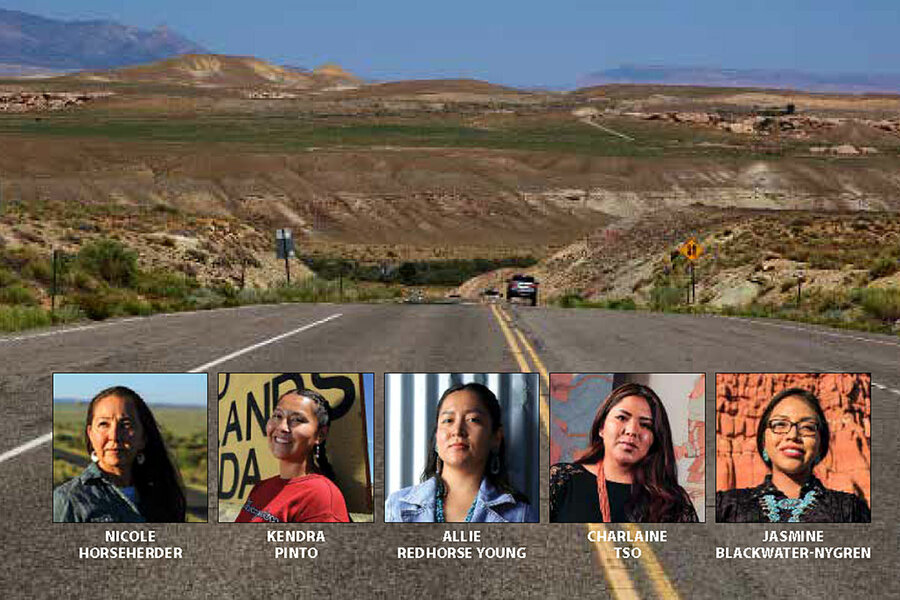Pass the mic: Amplifying voices of the unheard
Loading...
One of the central tenets of journalism is “to give voice to the voiceless.” It’s an ideal meant to empower the powerless. But there’s an implicit flaw in that framing. It takes a narrow view of power as something that must be bestowed by others. What’s more, it assumes that those who have been marginalized lack voices of their own.
The Dec. 20 cover story embraces the spirit of that covenant but takes a different approach by amplifying the voices of five Native women. Nicole Horseherder, Kendra Pinto, Allie Redhorse Young, Charlaine Tso, and Jasmine Blackwater-Nygren represent a community that is traditionally unheard in mainstream American media and public discourse. But they are powerful, building strength from their own experiences and communities. These emerging leaders waited for no one to grant them permission to speak. Yet their voices resonate loudly.
Our story features a series of photographic and literary portraits of each of these women, all members of Navajo Nation, the largest Native American reservation in the United States.
These aren’t your typical journalistic profiles, which tend to rely on the perceptions of others to flesh out the complexities that make up an individual, warts and all. Instead, photojournalist Randall Hyman drove hundreds of miles across the reservation – an area larger than 10 U.S. states – to interview and photograph these women as they choose to present themselves. Our story focuses on their work, not to bolster their causes, but to illustrate their determination, leadership, and fortitude.
Native women don’t often make headlines. That is starting to change, particularly with the appointment of Interior Secretary Deb Haaland, a member of the Pueblo of Laguna. Frequently, however, news coverage of Native women comes after they have suffered terrible violence. The plight of missing and murdered Indigenous women is a scourge that runs through many Native communities, not just in the U.S., but around the world. Bringing such stories to light is important, says Wendelin Hume, assistant professor of criminal justice at the University of North Dakota. But the root of the problem lies deeper than that.
“Historically, Indigenous people, like many people of color, were not thought of as fully human by the white colonizers,” she writes in The Conversation. “This historic dehumanization of Indigenous people is still evident today in violence against Native American people.”
As journalists, we have an obligation to expose injustices. But at the Monitor we take equally seriously our duty to shed light on the full tapestry of humanity. When we choose to see each other as vibrant, thoughtful individuals, it becomes clear just how interwoven our threads really are.
In that spirit I invite you to spend some time getting to know these five dedicated, resourceful, and accomplished women.
I’ll let them speak for themselves.








